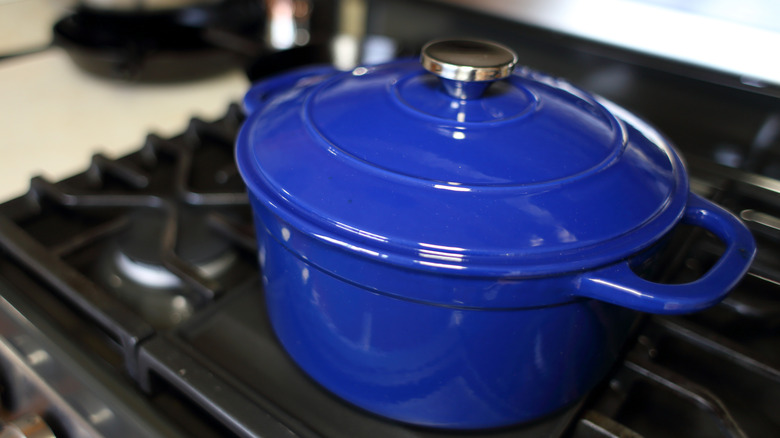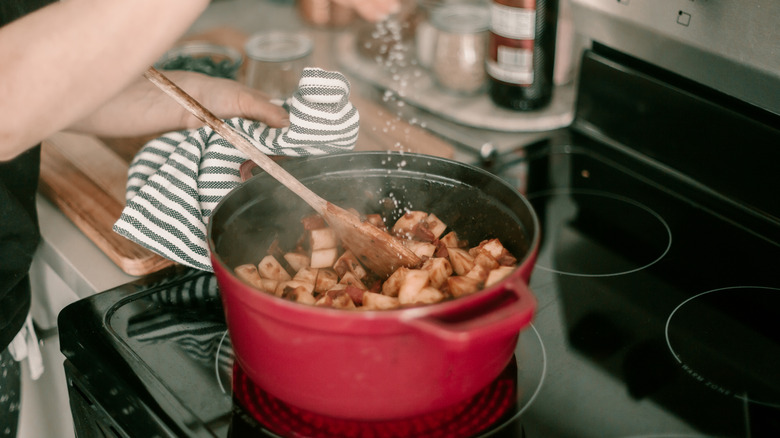What Happens If You Put A Hot Dutch Oven In Cold Water?
Enameled Dutch ovens are kitchen workhorses. Whether you indulge in a high-quality Le Creuset pan or a Lodge from Wal-Mart, the best uses of a Dutch oven can cover a wide breadth of your cooking needs with ease. More than just a one-trick pony, you can use it for everything from roasting chickens, making soups, baking bread, and slow braising meats; the Dutch oven will have you covered. Thinking it has a limited purpose isn't the only mistake you might make, though.
As Greatist points out, enameled cast iron doesn't take as much fuss as untreated cast iron skillets and cookware, but still needs a unique version of TLC. There is no seasoning required for enameled Dutch ovens. The shiny glaze is already designed to help prevent stains and sticky foods, and the body can be easily cleaned with soap and water, as long as you're sure not to use any metal tools that might scratch the coating.
Cook's Illustrated points out that in the most extreme cases, you might need to use boiling water, or use a bleach solution to work out the toughest stains. Dutch ovens don't regularly require extreme measures such as this, and this step is more like routine maintenance than a daily task.
However, one important thing to consider when caring for a Dutch oven is its relationship to heat.
Thermal shock still affects Dutch ovens
Caring for a Dutch oven means understanding how it conducts heat. Dutch ovens are slow to heat up but will hold their temperature incredibly well (via The Spruce Eats). That's why you should almost use a Dutch oven on high heat. Too much heat can cause damage to the enamel glaze. Cook's Illustrated recommends only using high heat when boiling water in a Dutch oven and that you should never heat an empty vessel. Because this style of pot holds heat so well, it's also important to make sure that it has cooled completely before putting it in the sink for cleaning.
While Dutch ovens are made of thick, heavy cast iron and sealed in a signature glaze, they are still vulnerable to thermal shocks like any other metal pot or pan, per Southern Living. It's advised to let your enamel Dutch oven cool completely before putting it in cool water. This will prevent any residual heat from reacting with the water, and damaging the glaze or warping your pan. Home Cook World also points out that Dutch ovens shouldn't be left to soak in water because the untreated rims can rust from the moisture. Instead, simply leave your Dutch oven to cool thoroughly and completely before washing it with warm water and gentle soap.

